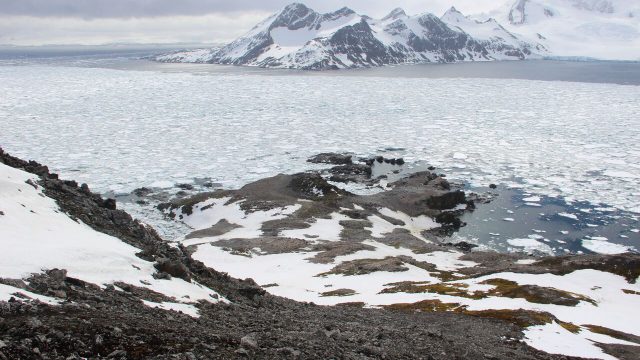
Dr Stef Bokhorst (Department of Ecological Sciences, VU Amsterdam, the Netherlands) applied for Antarctic Science bursary funding in 2013 to investigate the impact of marine vertebrates on Antarctic terrestrial micro-arthropods.
Funding enabled Stef to carry out a field campaign on Signy Island in collaboration with Prof. Convey at the British Antarctic Survey during November-December 2013.
Here Stef quantified the role of penguins and their nutrient input through faecal deposition on the abundance and diversity of microarthropods (springtails and mites) in cryptogams (mosses and lichens). Proximity to penguin colonies increased the nitrogen concentration of cryptogams, and the penguin source was confirmed by decreasing δ15N values at greater distances from colonies.
Micro-arthropod abundance, diversity (H’) and richness declined with distance from the penguin colonies, and was positively correlated with the nitrogen concentrations of cryptogams. Delta 15N of the micro-arthropods was even positively correlated (r2 = 0.9) with δ15N of the moss indicating that penguin-derived nitrogen moves through Antarctic food webs across multiple trophic levels (Bokhorst and Convey 2016).
The initial results from this study provided the impetus to apply for further funding from the Netherlands Polar Program and a large scale assessment on the impacts of marine vertebrates on the functioning of Antarctic terrestrial ecosystems is now underway (2014-2018). This clearly shows the importance of focused small scale funding, such as the Antarctic Science bursary, in testing out research ideas which can than grow into large research projects.
In addition, the Antarctic Science bursary allowed Stef to revisit a long-term climate warming study on Signy Island which was initiated in 2003. This long-term climate impact study showed a large scale decline in the dominant lichen Usnea antarctica (Bokhorst et al. 2016).
Bokhorst, S. and P. Convey 2016. Impact of marine vertebrates on Antarctic terrestrial micro-arthropods. Antarctic Science 28: 175-186.
Bokhorst, S., P. Convey, A. Huiskes and R. Aerts 2016. Usnea antarctica, an important Antarctic lichen, is vulnerable to aspects of regional environmental change. Polar Biology 39: 511-521.
